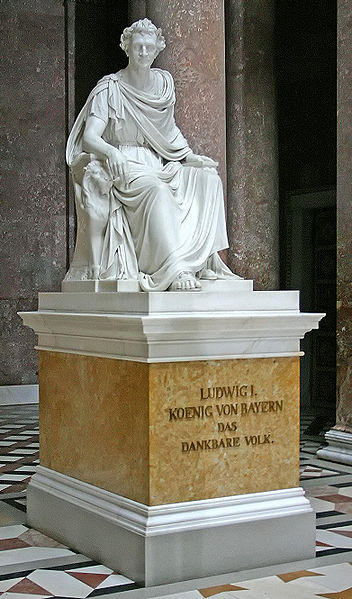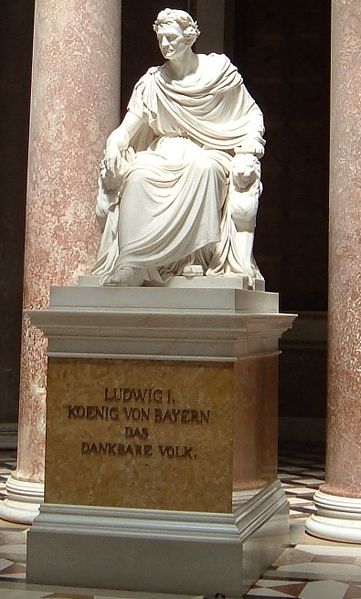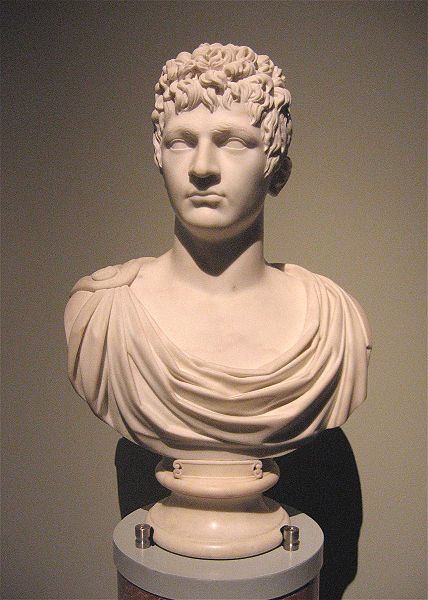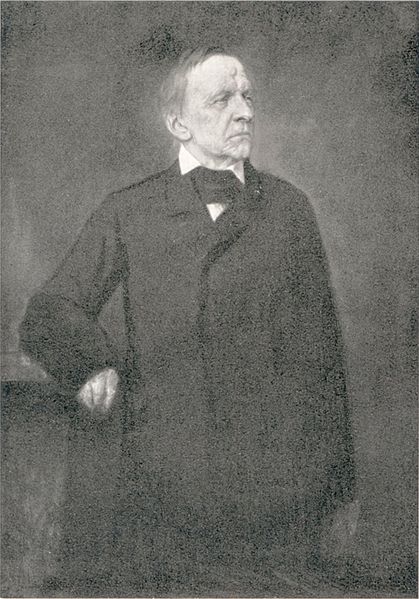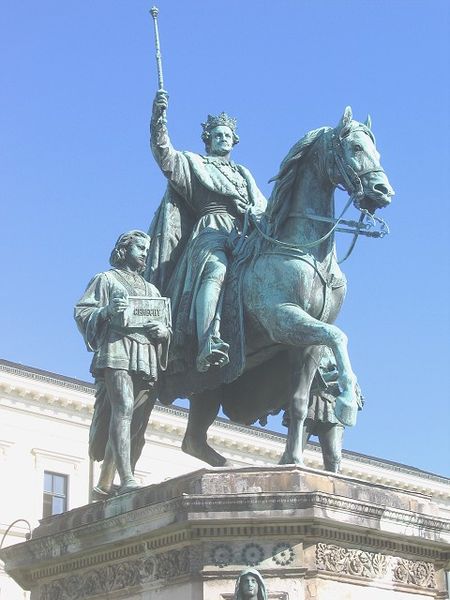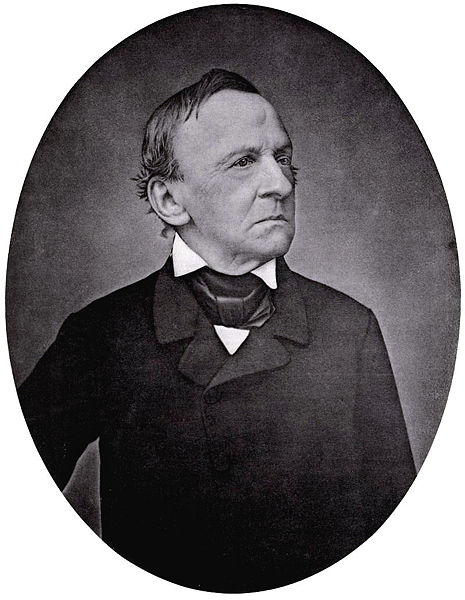<Back to Index>
- Physiologist Charles Robert Richet, 1850
- Writer Frederick Forsyth, 1938
- King of Bavaria Ludwig I, 1786
PAGE SPONSOR
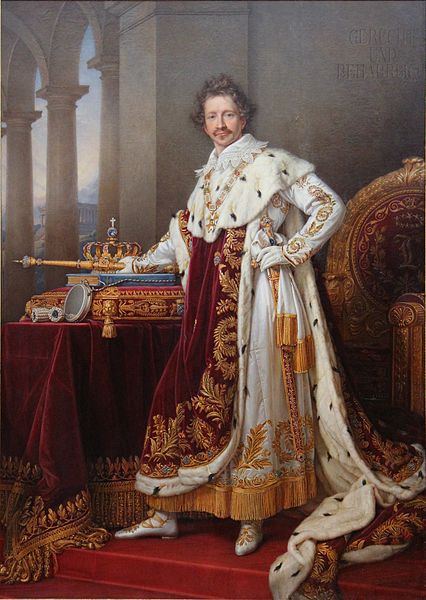
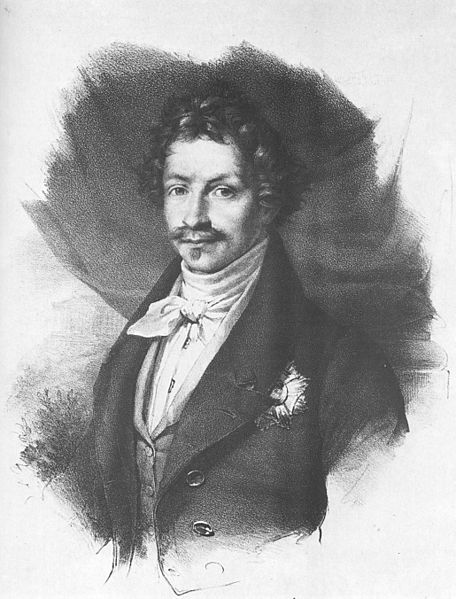

Ludwig I (also rendered in English as Louis I; 25 August 1786 – 29 February 1868) was a German king of Bavaria from 1825 until the 1848 revolutions in the German states.
Born in Strasbourg, he was the son of Count Palatine Maximilian Joseph of Zweibrücken by his first wife Augusta Wilhelmine of Hesse - Darmstadt. At the time of his birth, his father was an officer in the French army stationed at Strasbourg. He was the godson and namesake of Louis XVI of France. On 1 April 1795 his father succeeded Ludwig's uncle, Charles II, as duke of Zweibrücken, and on 16 February 1799 became Elector of Bavaria and Count Palatine of the Rhine, the Arch - Steward of the Empire, and Duke of Berg on the extinction of the Sulzbach line with the death of the elector Charles Theodore. His father assumed the title of King of Bavaria on 1 January 1806.
Starting in 1803 Ludwig studied in Landshut where he was taught by Johann Michael Sailer and in Göttingen. In October 1810, he married Therese of Saxe - Hildburghausen (1792 – 1854), the daughter of Frederick, Duke of Saxe - Hildburghausen. The wedding was the occasion of the first ever Oktoberfest.
Ludwig strongly rejected the alliance of his father with Napoleon I of France but
in spite of his anti - French politics the crown prince had to join the
emperor's wars with allied Bavarian troops in 1806. As commander of the
1st Bavarian Division in VII Corps, he served under Marshal François Joseph Lefebvre in 1809. He led his division in action at the Battle of Abensberg on 20 April. In 1817 Ludwig was involved in the fall of Prime Minister Count Max Josef von Montgelas. He succeeded his father on the throne in 1825. Ludwig's rule was strongly affected by his enthusiasm for the arts and women and by his overreaching royal assertiveness. An
enthusiast for the German Middle Ages, Ludwig ordered the re-erection
of several monasteries in Bavaria which had been closed during the German Mediatisation. He reorganized the administrative regions of Bavaria in 1837 and re-introduced the old names Upper Bavaria, Lower Bavaria, Franconia, Swabia, Upper Palatinate and Palatinate. He changed his royal titles to Ludwig, King of Bavaria, Duke of Franconia, Duke in Swabia and Count Palatine of the Rhine. His successors kept these titles. Ludwig's plan to reunite the eastern part of the Palatinate with Bavaria could not be realized. The Electoral Palatinate, a former dominion of the Wittelsbach, had been split up in 1815, the eastern bank of the Rhine with Mannheim and Heidelberg was given to Baden, only the western bank was granted to Bavaria. Here Ludwig founded the city of Ludwigshafen as a Bavarian rival to Mannheim. Ludwig also encouraged Bavaria's industrialization. He initiated the Ludwig Canal between the rivers Main and the Danube. In 1835 the first German railway was constructed in his domain, between the cities of Fürth and Nuremberg. Bavaria joined the Zollverein in 1834. As a philhellene Ludwig supported the Greek fight of independence: His second son Otto was
elected king of Greece in 1832. Otto's government was initially run by a
three man regency council made up of Bavarian court officials. After the July Revolution in France 1830, his previous liberal policy became more and more repressive. The Hambacher Fest in 1832 showed the discontent of the population with high taxes and censorship. In 1837, the Roman Catholic supported clerical movement, the Ultramontanes,
came to power in the Bavarian parliament and began a campaign of change
to the constitution, which removed civil rights that had earlier been
granted to Protestants, as well as enforcing censorship and forbidding
the free discussion of internal politics. This regime was short lived
due to the demands by the Ultramontanes for the naturalization of Ludwig
I's Irish born mistress Eliza Gilbert (better known by her stage name Lola Montez). Ludwig resented this move and the Ultramontanes were pushed out. In 1844 Ludwig was confronted with the Beer riots in Bavaria. During the revolutions of 1848 the
king faced increasing protests and demonstrations by the students and
the middle classes. The Cabinet turned against him. Not willing to rule
as a constitutional monarch, Ludwig abdicated on 20 March 1848 in favour of his eldest son, Maximilian. He died at Nice, and was buried in St. Boniface's Abbey, Munich. As
admirer of ancient Greece and the Italian renaissance Ludwig patronized
the arts as principal of many neoclassical buildings, especially in Munich, and as fanatic collector. Among others he had built were the Walhalla temple, the Befreiungshalle, the Ludwigstrasse, the Bavaria statue, the Glyptothek, the Old and the New Pinakothek. His architects Leo von Klenze and Friedrich von Gärtner also strongly influenced the cityscape of modern Athens.
The king collected Greek and Roman sculptures, Early German and Early
Dutch paintings, masterpieces of the Italian renaissance, and
contemporary art for his museums and galleries. He placed special
emphasis on collecting Greek and Roman sculpture. One of his most famous
conceptions is the celebrated "Schönheitengalerie" (Gallery of Beauties), in the south pavilion of his Nymphenburg Palace in Munich. A collection of 36 portraits of the beautiful women painted between 1827 and 1850 mostly by Joseph Karl Stieler. After
his abdication, Ludwig remained an important and lavish sponsor for the
arts. This caused several conflicts with his son and successor
Maximilian. Finally Ludwig financed his projects from his own resources. He moved the Ludwig - Maximilians - Universität from Landshut to Munich in 1826. Because of King Ludwig's passion for everything Hellenic,
the German name for Bavaria today is spelled "Bayern", while the
language spoken there has retained its original spelling "Bairisch" — note
the I versus the "Hellenic" Y. Ludwig
was an eccentric and notoriously bad poet. He would write about
anything, no matter how trivial, with strings of rhyming couplets. For
this the king was teased by Heinrich Heine who
wrote several mockery poems in Ludwig's style. Ironically Ludwig's
Walhalla temple added Heine's bust to its collection in 2009. In
private life Ludwig was, in spite of his royal assertiveness, modest
and companionable and was even known for his often shabby attire. Ludwig
was hard of hearing and had a birthmark on his forehead which was often
concealed in portraits. Ludwig had several extramarital affairs and was one of the lovers of Lady Jane Digby, an aristocratic English adventuress. Ludwig also became tainted with scandals associated with Lola Montez,
another of his mistresses. It seems likely that his relationship with
her contributed greatly to the fall from grace of the previously
popular king.
